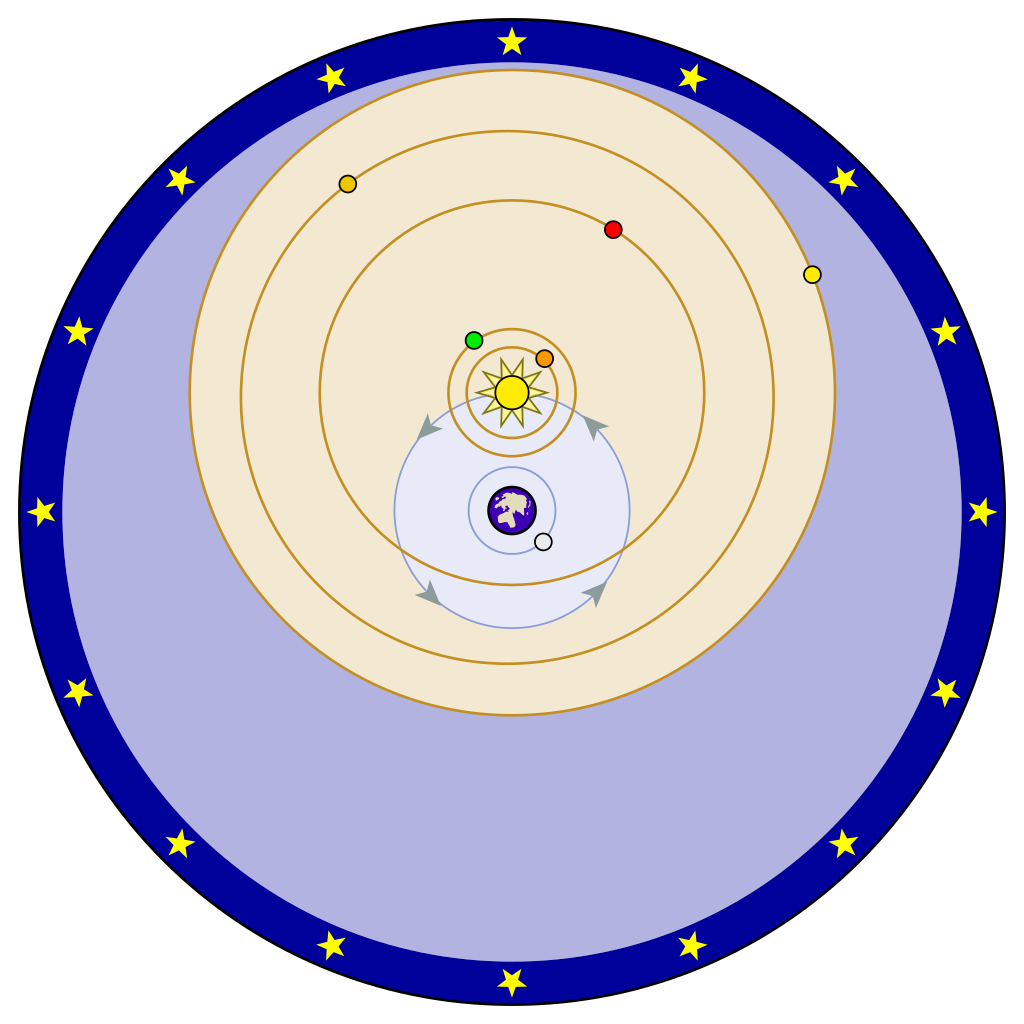Parallax Strikes Again!
Given that it was Tycho’s data that was ultimately used (by Kepler) to make the correct model in which Earth orbits the Sun, you might wonder why Tycho himself didn’t figure this out. After all, he was more familiar with the data than anyone else.
In fact, Tycho tried, and he correctly realized that the planets we see in the sky must be orbiting the Sun. But he still got it wrong when it came to Earth, coming up with a strange model in which he kept Earth stationary at the center, even while he put all the rest of the planets in orbit of the Sun (Figure 1).
Why didn’t Tycho realize that Earth also orbits the Sun? Interestingly, it seems that the answer comes back to stellar parallax, which we discussed in Section 3.1.2.
Recall that stellar parallax must occur if Earth really orbits the Sun. Tycho knew this, so he tried to measure it — but he couldn’t. Today, it is easy to understand the reason: Tycho’s measurements were accurate to about 1 arcminute, but even the nearest stars have parallax angles of less than one arcsecond. Of course, Tycho also realized that his inability to measure stellar parallax might simply mean that the stars were too far away for it to be observable. But he knew he was making the most accurate measurements of position ever made, and he just couldn’t imagine that stars could really be so far away that he wouldn’t detect their parallax.
In summary, Tycho suffered from the same failure of the imagination as the ancient Greeks. He drew the wrong conclusion about Earth’s place in the solar system because he couldn’t imagine that the universe could actually be so big that he’d be unable to detect parallax of the stars. But it is, and as we’ve discussed, telescopes now make it possible for us to observe stellar parallax, providing clear proof that Earth really does orbit the Sun.
